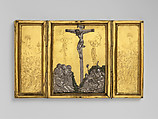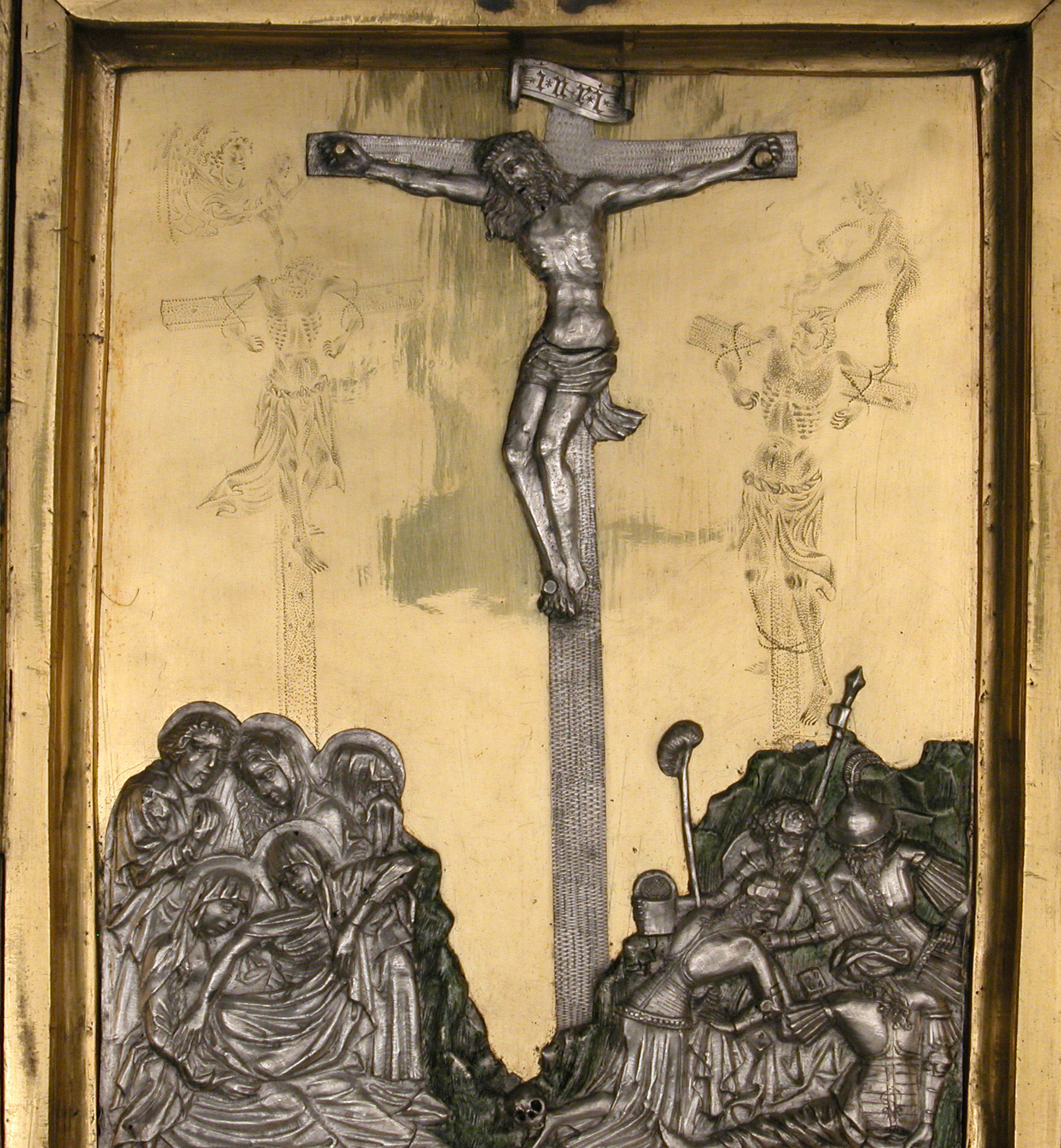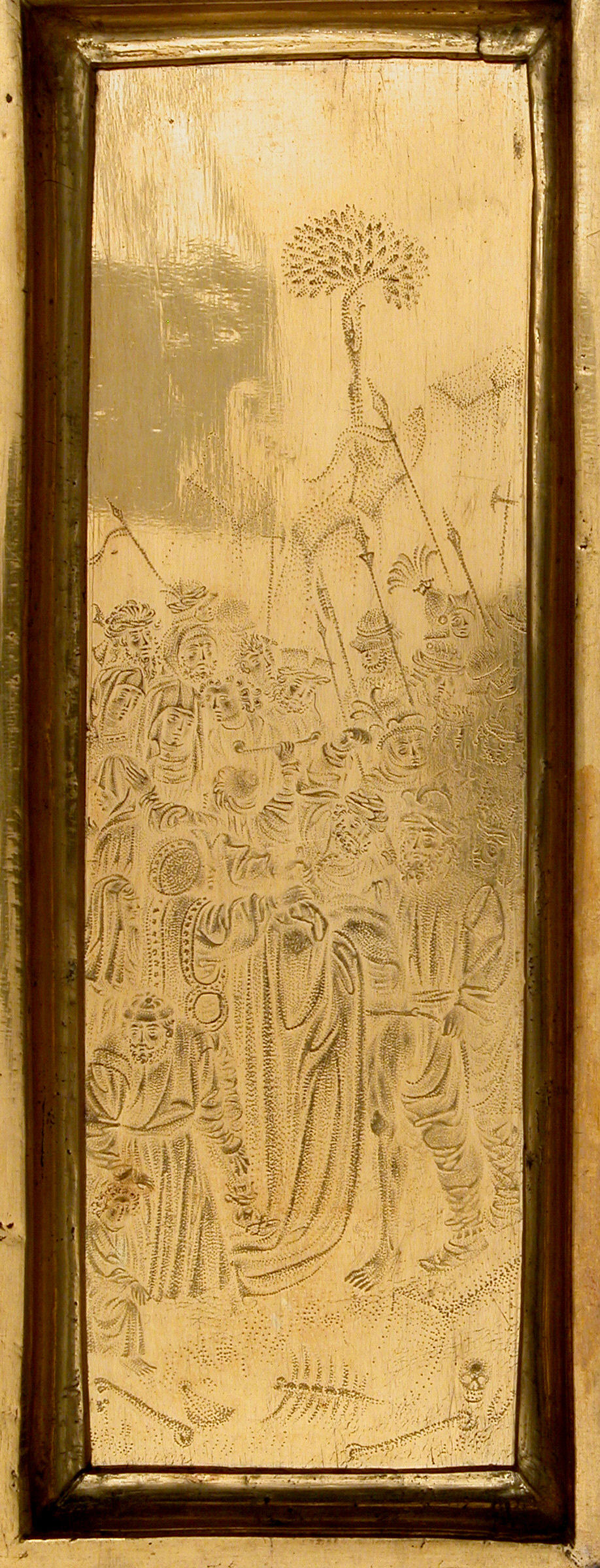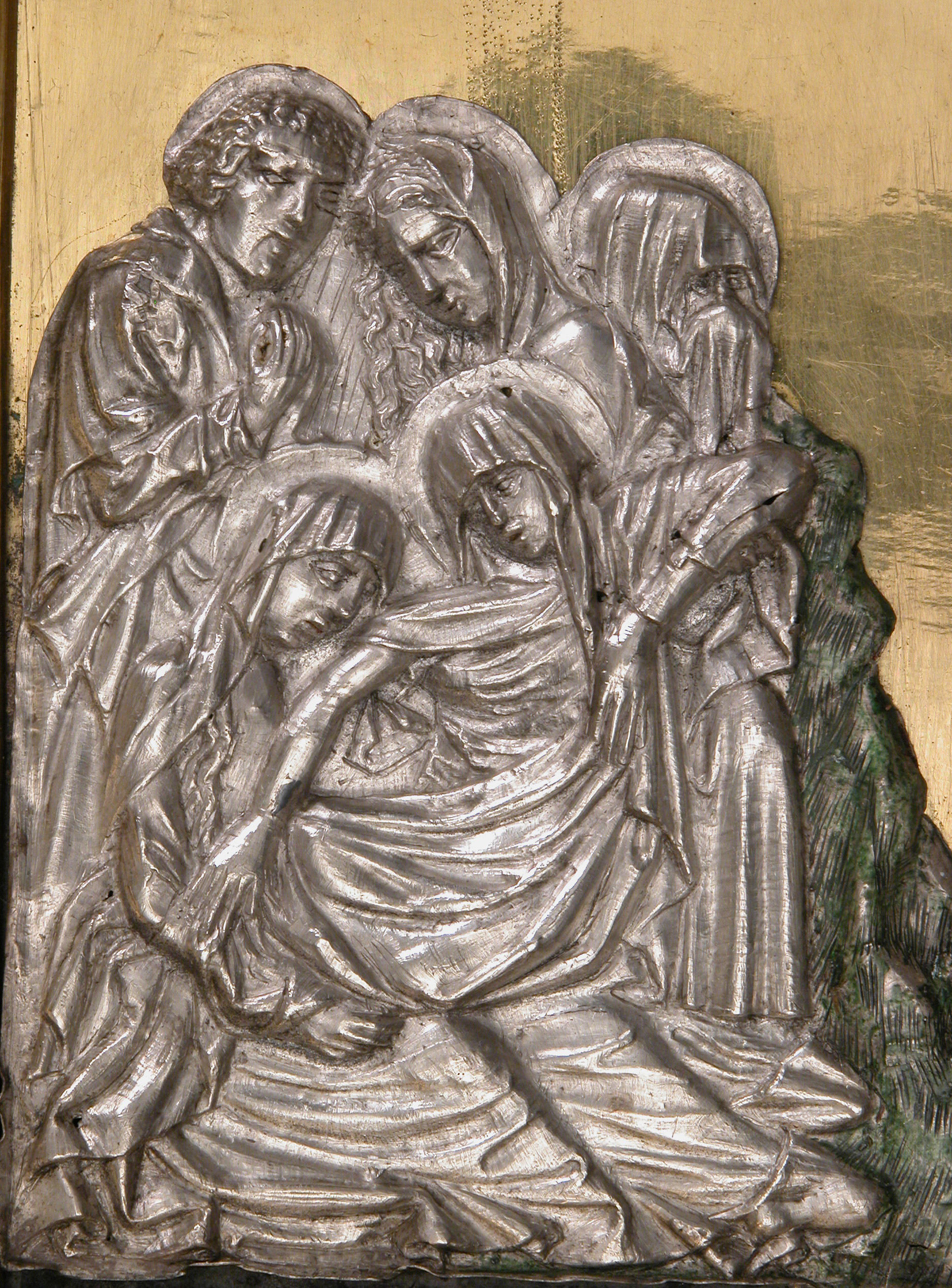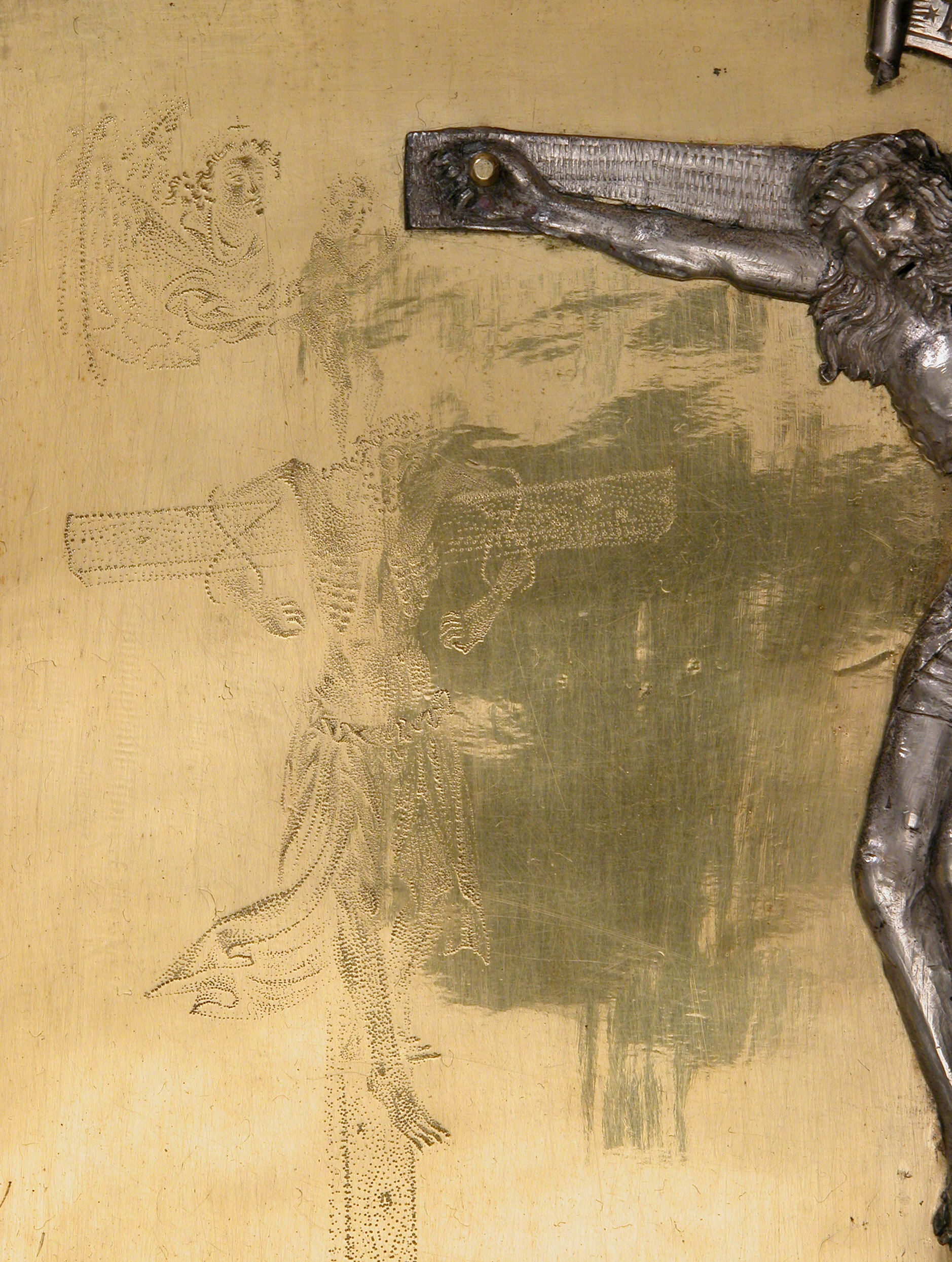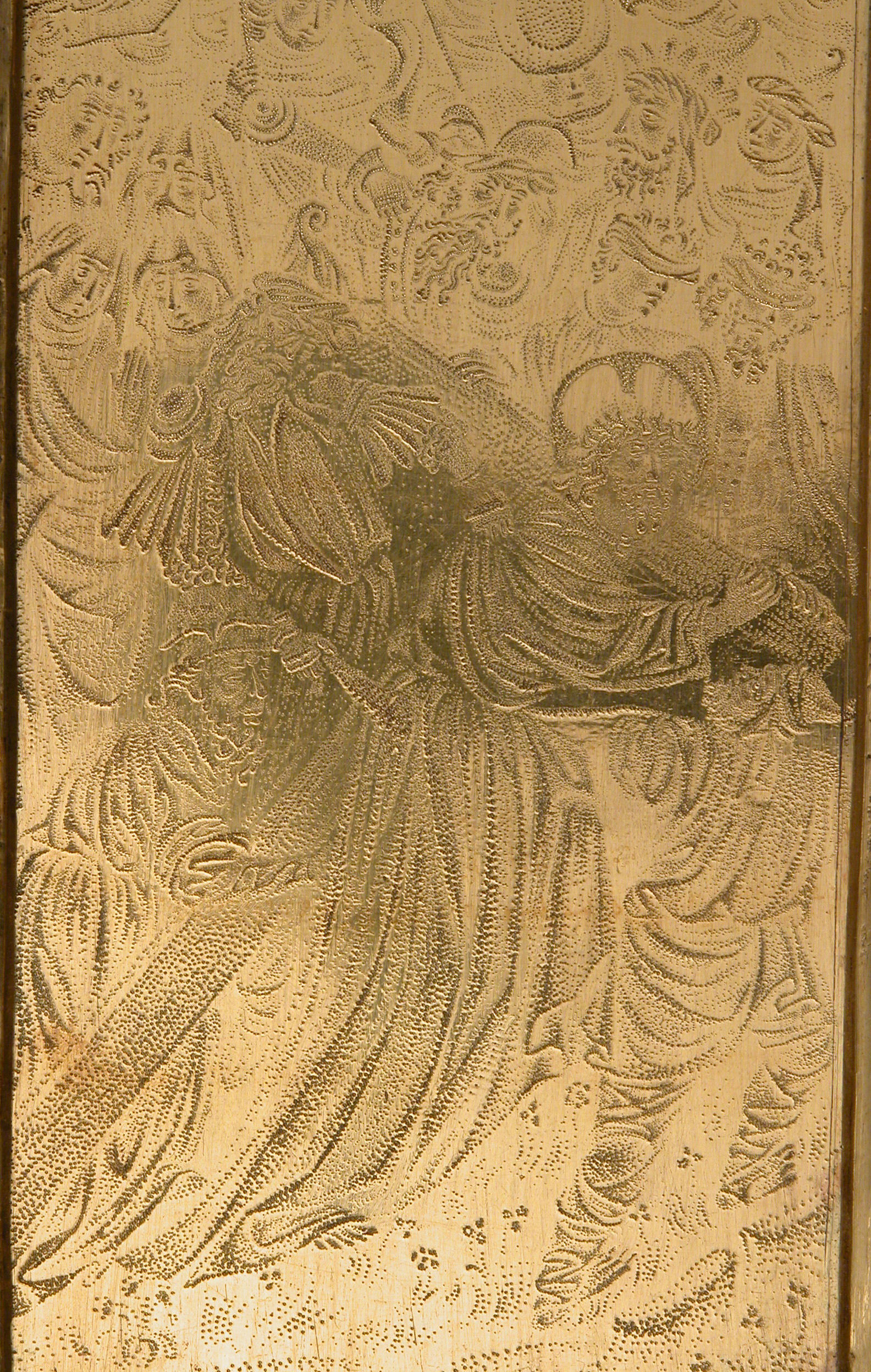Triptych with the Way to Calvary, the Crucifixion, and the Disrobing of Jesus
Made as an object of private devotion for an affluent patron, this triptych is a virtuoso example of Parisian goldsmiths' art of the early fifteenth century. Christ, the group of mourners, and the soldiers on the central panel are reliefs of uncolored silver. By contrast, the two thieves in the gilded background, as well as the Carrying of the Cross and Christ Disrobed on the wings, are rendered in pointillé (stippling). In this technique, the goldsmith's hammer hits a very fine stamp repeatedly into the metal ground, leaving a multitude of indentations. Their varying thickness and concentration establish shadows, depth, and the overall legibility of the composition. The refinement and the difficulty involved (this method allows no correction) appealed greatly to members of the Valois court, who were the principal commissioners of such objects.
Due to rights restrictions, this image cannot be enlarged, viewed at full screen, or downloaded.
This artwork is meant to be viewed from right to left. Scroll left to view more.
